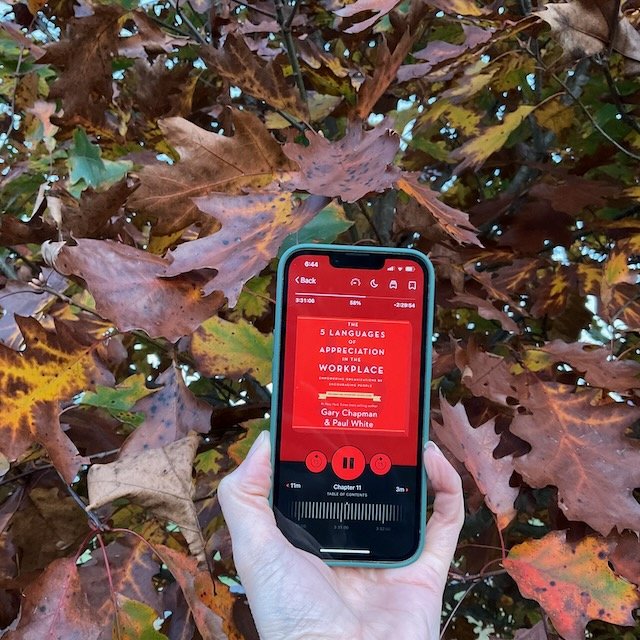The Five Languages of Appreciation in the Workplace (by Gary Chapman and Paul White)
I chose The Five Languages of Appreciation in the Workplace by Gary Chapman and Paul White from my massive TBR pile with the hope of gaining some ideas on how I can better show appreciation for my coworkers. I immediately liked the book and found the introduction and background story interesting. I then almost bailed on the book entirely when the authors started reporting on statistics and research. The intellectual part of my brain completely understands the need to share this information as it supports the foundation of the five languages the authors developed; however, I was simply looking for some ideas for my personal growth in the workplace. Fortunately, I stayed the course and gained a lot from the book.
I quickly learned that I need to pay better attention to what my coworkers prefer in terms of appreciation. The book helped me understand why some of my coworkers get so excited about free food at work, dress down days, and group gatherings outside of work. These languages of appreciation don’t fit me, so understanding how they are meaningful to others, will be helpful for me to celebrate in their excitement. I can also learn from these moments what my coworkers prefer so that I can show my appreciation better with verbal praise, helping complete tasks, and increasing personal interactions while at work.
I also acquired a sense of compassion for supervisors and administrative leaders of companies, organizations, and agencies when they implement strategies to show their overall appreciation for employees on a large scale. I work for a large agency and our local administration tries to improve morale in ways that don’t always fit my language of appreciation. I understand they have good intentions and that they obviously can’t satisfy everyone’s language.
As I continued reading, I ended up learning more about my preferences than I intended. I recognize that my language of appreciation has changed over the course of my career. Presently, I appreciate quality time with my coworkers. It’s easy for me to get caught up in the day to day busyness and neglect the effort for brief conversations throughout the day. This is an area I intend to put forth more effort. I learned how to offer help to my coworkers; genuinely volunteer, complete the task how they would do it, be specific about the time I have available, and ask before completing the task. This portion of the book strongly resonated with me as this is exactly how I prefer to be helped. I feel so validated. I can’t stand it when someone takes over a task of mine without asking first. I realize they believe they are helping me, but I perceive that as intrusive. When they do ask, it feels great when they complete the task as I would do it, for purposes of consistency.
After the authors thoroughly explain the five languages of appreciation, they discuss the common barriers specific work environments have to implementing these ideas; volunteers, non-profits, law enforcement, hospitals, working from home, etc. They did well acknowledging difficulties and offering alternatives. I don’t work from home, my job is not conducive to that structure; however, the authors did a great job talking about the barriers working from home creates when showing appreciation and the overall relationships with coworkers. The authors offered helpful suggestions, but they seemed insufficient. In my opinion, there isn’t an adequate solution for maintaining workplace relationships when a person works from home. There’s no substitute for going to a workplace and interacting with your coworkers and supervisors in person.
I didn’t realize there was a test I could take to learn my preferred language of appreciation and I chose not to take it when I learned about it while reading the book. My purpose of gaining insight into how I can pay attention to my coworkers’ languages of appreciation was satisfying. Learning what I did about my own language was helpful and allowed me to understand why I prefer certain methods over others. For me, this was a bonus to reading this book and sufficient for where I am in my career.
The audiobook is narrated by the author, Paul White.
As a participant in the Amazon Associates Program, I earn from qualifying purchases linked back to Amazon. Every penny earned allows me to blog about books and keeps this site running.


